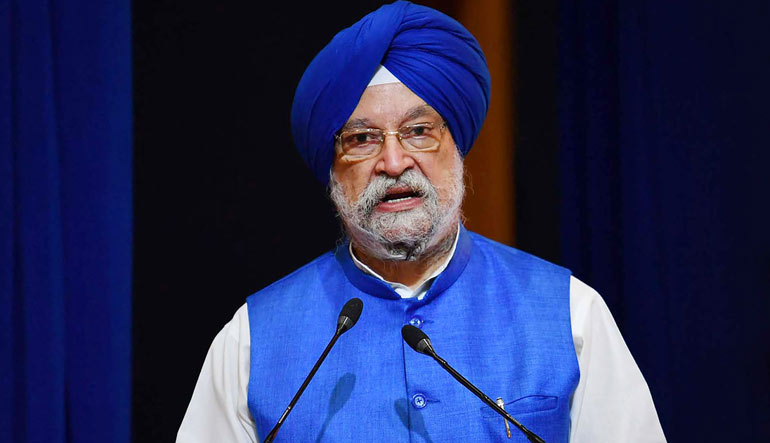Toffee wrappers may no longer be tossed around with gay abandon and children might be urging elders not to litter, according to Prime Minister Narendra Modi, but what about spitting gutka and paan masala?
This was one of the questions thrown at Union Minister of Housing and Urban Affairs Hardeep Singh Puri at a press conference organised on Swachh Bharat Mission (SBM) 2.0 and Atal Mission For Rejuvenation and Urban Transformation (Amrut) 2.0. The minister pointed out that unruly spitters are now chided and sidelined into a corner, and that this "behavioural" and cultural change has been one of the biggest achievements in the last seven years since SBM was first launched in 2014. The second iteration of the schemes have now received an outlay of Rs 4.4 lakh crore. SBM 2.0 has received 1,41, 600 crore as fresh allocation, about 2.5 times higher than SBM 1, to be used over the next five years to make India "garbage free" by 2026.
Invoking the greatest "sanitation champion" in India, Mahatma Gandhi, in the run-up to the 152nd Gandhi Jayanti on October 2, the minister said urban India was declared 'Open Defecation Free' (ODF) in 2019 and now under SBM-U, 2-0, all statutory towns are expected to become ODF+ and ODF++. Over the next five years, construction of over 3.5 lakh individual, community and public toilets are on the anvil. Complete liquid waste management in cities with population of less than one lakh is a new component under SBM Urban 2.0. All cities are expected to achieve at least three-star garbage-free certification.
AMRUT was launched as the first water-focused mission in 2015, with a total mission outlay of ₹1,00,000 crore. The mission caters to 500 major cities covering 60 per cent of the urban population. Now, AMRUT2.0 aims to make around 4,700 towns/cities ‘water secure’.
According to a 2019 UNICEF report, 568 million people used fields, forests, water bodies and other public spaces for defecating in public, but by 2019, people without access to toilets had reduced by an estimated 450 million people—considered a significant achievement. But according to the 2021 World Population Review, compiled by researchers from Yale and Columbia university, India ranks 162 out of 172 countries on the cleanliness index.





